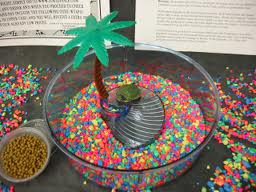Flight Of The Butterflies Movie
Dr. Chip Taylor, Scientific Advisor
 Monarch butterflies are amazing fragile creatures (weighing less than a penny), which could be crushed by a raindrop. Every year they undertake a spectacular journey (the longest insect migration on the planet) across Canada-U.S.-Mexico, to a place they've never been.
Monarch butterflies are amazing fragile creatures (weighing less than a penny), which could be crushed by a raindrop. Every year they undertake a spectacular journey (the longest insect migration on the planet) across Canada-U.S.-Mexico, to a place they've never been.
Flight of the Butterflies is an awe-inspiring adventure of two unlikely heroes that share a common strength. Based on the true story, the film follows the epic journey of the iconic monarch butterfly and the determined scientist, Dr. Fred Urquhart, who spent 40 years trying to discover the mysteries surrounding their journey and secret winter hideaway. It all began with a small boy daydreaming about where butterflies went each winter.
As the film illustrates, it takes two to five generations of butterflies to migrate north from Mexico through the U.S. to Canada and one “super generation” to complete the migration back south to Mexico.
The migration from Mexico usually starts around late February or early March. Most of these butterflies die in 3 weeks and it is their offspring that make their way up to Canada. It can take two to three generations to complete the trip, with the last super generation (or migratory generation) making their way back down to Mexico starting in August. They will arrive in Mexico in conjunction with the “Day of the Dead,” in the beginning of November. This last super generation can live around 8 to 9 months, compared to the prior generations that only live about 3 weeks.
Unfortunately, the population of Monarchs is only half of what it used to be about 10 years ago. This is mainly due to loss of habitat and changes in agricultural and development.
In the immersive 3D Giant Screen environment, moviegoers can experience this journey up close and see the evolution from egg to caterpillar to pupa to butterfly captured for the first time.
Visit Website
 Pet Halloween Costumes: Spook-tastic or Just Crazy? -Dr. Debbie
Pet Halloween Costumes: Spook-tastic or Just Crazy? -Dr. Debbie
Will Fluffy or Benji be dressed up for Halloween this year? Pets are increasingly recognized as family members and often included in the holiday costume craze. But are pet costumes just for human folly, or do pets actually LIKE sporting the costumes, hats and accessories?
Admittedly, I fall among those that do indulge in this practice, but my pets enjoy wearing Halloween costumes.
Years of positive reinforcement with treat rewards, and my dogs will happily wear anything in the off chance of a tasty morsel. The mere sight of a costume starts my Labrador prancing and bouncing as if on a trampoline.
In my home, Halloween pet fun has evolved a step further than most, as I proudly maintain a sizable collection of pet costumes. After 13 years, the collection of doggie costumes includes firemen, doctors, princesses, cowboys, police officers, pumpkins, caterpillars, pirates and skeletons spilling from the overstuffed confines of the cabinet.
My pet costume collection is akin to Katherine Heigl's character in the movie "27 Dresses," in which her mass of bridesmaid dresses fills a closet and generates smirks from others.
Call me crazy, but I adore seeing my critters ham it up for Halloween. And clearly I am not alone. According to consumer surveys by the National Retail Federation, 170 million Americans will be celebrating Halloween.
 Among those individuals 16-percent will be dressing the family pet in costume too. That's a lot of consumer spending on pet wear when budgets are tight, but the smiles and giggles arising from seeing your pet dressed in a spooky or silly costume, is well worth the expenditure.
Among those individuals 16-percent will be dressing the family pet in costume too. That's a lot of consumer spending on pet wear when budgets are tight, but the smiles and giggles arising from seeing your pet dressed in a spooky or silly costume, is well worth the expenditure.
Some might argue that pet costumes are frivolous or humiliating, but I disagree. Dogs enjoy costumes when introduced in a positive manner, just as they do with gradual acclimation to car travel or swimming. Plus, a dog is devoted companion and wishes to please its owner.
My own dog family adores the celebration and attention they receive. Cats on the other hand, may not enjoy any part of dress up and are often indifferent to the idea of pleasing or serving us, as it is often the other way around.
Featured veterinarian known as "Dr. Debbie" on national pet radio program, Animal Radio. Ebook author of "Yorkshire Terriers: How to Be Your Dog's Best Friend"; "Pugs: How to Be Your Dog's Best Friend"; "Mini Schnauzers: How to Be Your Dog's Best Friend"; and "Shih Tzu: How to Be Your Dog's Best Friend." Dr. Debbie's books.
Visit Website
5 Reasons Halloween Can Be The Scariest Holiday For Your Pet
Robert Semrow, Listomania
 Halloween is all about escaping from reality for a night and having a fun time with your family and friends. However, there is a family member that should not be subject to the Halloween activities and that is your pet. That's right, for many animals Halloween is the most scariest and dangerous holiday there is. For your pets, there are fewer nights more confusing and bewildering to them. So let me bewitch with some things to consider:
Halloween is all about escaping from reality for a night and having a fun time with your family and friends. However, there is a family member that should not be subject to the Halloween activities and that is your pet. That's right, for many animals Halloween is the most scariest and dangerous holiday there is. For your pets, there are fewer nights more confusing and bewildering to them. So let me bewitch with some things to consider:
Let's start with the costumes, people and pet costumes. On Halloween people get dressed up in a variety of costumes from fantasy to sci to horror inspired and more. This alone is confusing for our pets who aren't sure what the heck happened to their favorite neighbor who now resembles a zombie and is acting like one to.
Then there are the pet costumes, and let's admit it, the costumes for pets have gotten much better, much more comfortable and much cuter than ever before. However, that still doesn't change the fact that most pets don't wear clothing on a regular basis. So if your pet is not enjoying being dressed up like your favorite movie character, then let them be au natural for the Halloween festivities.
Next up are the constant pounding of the door and the ringing of doorbells. Your pets are convinced that the whole world is coming to take over your house. For some pets, it's their mission to protect their home and their beloved family from strangers, especially wild and crazy looking ones that keep showing up with bags in hand and demanding treats. Every pet knows that you can't just demand a treat, you have to earn it and knocking on a door is not a treat to them.
Speaking of treats, the treats handed out on Halloween are especially unsafe for our pets. Chocolates, candies and more are not safe for our pets and can cause serious injuries if ingested by curious pets who think they have earned a wrapped treat since they have been alerting the family to these costumed intruders all night. Keep the treats in an area where no pet can access them, for their sake and safety.
 For many people Halloween is also about the decorations, for pet's this is one more area of potential danger that is enticing to the curious pet. From candles to ingestible objects and more, decorations need to be pet safe if you are going to have them within reach of them.
For many people Halloween is also about the decorations, for pet's this is one more area of potential danger that is enticing to the curious pet. From candles to ingestible objects and more, decorations need to be pet safe if you are going to have them within reach of them.
Finally, Halloween is an overwhelming holiday for pets. The costumes, the constant intruders, the confusing sights and sounds, it can make a pet stress out and lash out. We don't need a door dash or worse yet, a show of force from your pet who is triggered by that scary clown costume. Seriously why is there always a scary clown? Ok, I digress. Keep your pet safe this Halloween. It might be all fun and games to you, but give your pet the night off. You protect them and keep them in safe area away from it all.
Share your pet Halloween thoughts on our Animal Radio Facebook Page.
Visit Website
The Dogfather's Grooming Tip with Joey Villani
 Prevent Hair Breakage
Prevent Hair Breakage
Joey was contacted by a woman who has a Lhaso Apso and lives at the beach. The dog is having a big problem with hair breakage, as he spends a lot of time in the sand.
It makes a lot of sense to Joey when he found out the problem is occurring near the water, as it makes it difficult to diagnose without actually seeing the dog. When you live near an area that has a lot of sand or a lot of dust, either near the beach or in the desert, and have a dog with a long flowing coat, the sand is very abrasive and almost works like sandpaper and will break down you dog’s coat no matter what you do. You might think that applying a great amount of conditioner will solve the issue. The problem with this is that there are many kinds of conditioning treatments for your pet depending where you live.
For instance, if you live near a sandy environment, you don’t want to use a conditioner that has filler in it. Filler is anything that states it whitens, brightens, texturizes, contains lanolins or silicone and is basically anything that alters the coat. You want plain conditioner. When you use a conditioner with filler near sand, your dog’s coat becomes a magnet and will suck up sand, because the coat will be a little sticky, and will be like a dust magnet.
For sandy areas, you want something that is going to hydrate, moisturize and correct the coat without pulling things into it. This conditioner will absorb into the skin through the hair shaft and it will help nourish the hair, without just sitting on the coat.
If you live away from the coast in a humid area, you want to use a conditioner that contains fillers. For this area, this type of conditioner will develop the volume that you want, without being a dust magnet. But you still don’t want to use it everyday.
Joey likes to use a product call Show Sheen when he wants a nice shine on a dog. This is a big secret of Joey’s and is his number one product. Show Sheen will moisturize and will almost coat the dog, but it is a dust magnet so you don’t want to use it every day. You can apply it once every four to six weeks.
Animal Radio News with Stacey Cohen
 Dog Hitchhiked Under The Hood For 110 Miles
Dog Hitchhiked Under The Hood For 110 Miles
A dog survived a 110-mile trip beneath the hood of a Chevy Silverado with the blazing Southern California sun above. Surprisingly, afterwards the 25-pound pooch did very well. The man driving the vehicle said he had no idea there was a dog hitching a ride in the engine compartment until he stopped for lunch. He said after he turned off the engine, he felt something moving in the truck. When he got out to look, he said he saw some fur sticking out from above the left front tire. The dog was nicknamed "Chevy."
Chocolate May Boost Memory – But In Snails!
A Canadian study showed that chocolate may boost memory, but in snails. The study by the University Of Calgary was published in the Journal Of Experimental Biology. It showed that a flavonoid found in chocolate, wine and green tea enhanced the snails' memory. Scientists made their discovery by injecting snails with the chocolate flavonoid and submerging them in water. Typically, when underwater snails extend a snorkel-like breathing tube. If the water is deeper than the tube the snail can only remember to keep the tube closed for three hours. But when the snails were injected with the chocolate component they remembered to keep their snorkel shut for a whole day. A second session showed the snails had improved their memory and they kept their breathing tube closed for three days. Further tests also showed that the chocolate-exposed snails retained their memory longer than regular snails. However, researchers still do not know what the implications of these tests are for human memory.
 Who Better To Find A Lost Dog Than Another Dog?
Who Better To Find A Lost Dog Than Another Dog?
Anne Wills is the founder and executive director of Dogs Finding Dogs, a Baltimore-area nonprofit that uses trained tracking teams to search for lost pets. Her group mostly works in Maryland, Delaware, Virginia, Pennsylvania and the District of Columbia, but it counsels owners of lost pets on a national basis and has other qualified teams scattered around the country. “(Tracking) still works," says Wills, noting her group's 94 percent success rate. A scent can last three or four weeks, said Wills, depending on environmental factors (weather, traffic conditions, type of surface). Her teams are successful, she says, because they're aggressive and persistent. Wills' website includes a list of useful tips for anyone who has lost a pet.
Pooches Get High On Pot
Pooches getting high on pot are an increasing problem in states like Colorado, where medical marijuana is legal. Veterinarians say what used to be a rare problem is becoming alarmingly more common, and the results can be deadly. When dogs get into their owner’s stash, they can get sick, staggering and vomiting. “They basically [lose] a lot of their fine motor control, they have a wide-based stance and they are not sure on their feet,” said Dr. Debbie Van Pelt who works at the Veterinary Specialty and Emergency Hospital in Englewood, Colorado. Dogs most commonly get stoned by eating their owner’s pot-enhanced foods. Dr. Stacy Meola, a veterinarian at Colorado’s Wheat Ridge Clinic said she saw two dogs die when they got into baked goods made with marijuana butter, commonly sold at dispensaries. While most dogs that ingest marijuana are back to normal within 24 hours of treatment, vets urge pet owners to keep the drug at a safe distance from animals.
 Armed & Dangerous Turtles
Armed & Dangerous Turtles
If a pet turtle shows up at your home, do not take him in. He is considered armed and dangerous. No joke. According to the Centers for Disease Control and Prevention (CDC), the number of Salmonella cases linked to tiny breeds of the reptile (it's not an amphibian!) is on the rise. Outbreaks of the bacteria-borne illness are directly linked to exposure to the illegal contraband. Yes, pet turtles are illegal. Here's how it happens: They release the bacteria when they relieve themselves (that's a fancy way of saying turtle poop). Remnants of the Salmonella strain live on their shells and get transferred to human hands and mouths easily. Even just letting the turtles run free in the house can spread the disease with serious consequences.
Hogs Gone Wild
An investigation was done regarding the death of an Oregon farmer who was eaten by his hogs. Authorities said the 70-year old man went out to feed his animals, including several hogs that weighed about 700 pounds apiece. Shortly thereafter, family members went to the hog pen and found the man’s dentures, but little else. Authorities say the hogs ended up eating most of the man in their enclosure. Officials tried figure out whether one of the animals knocked the man down, or if he might have had a heart attack and ended up in a position where the hogs could consume him.
 Listen to the entire Podcast of this show (#1193)
Listen to the entire Podcast of this show (#1193)





